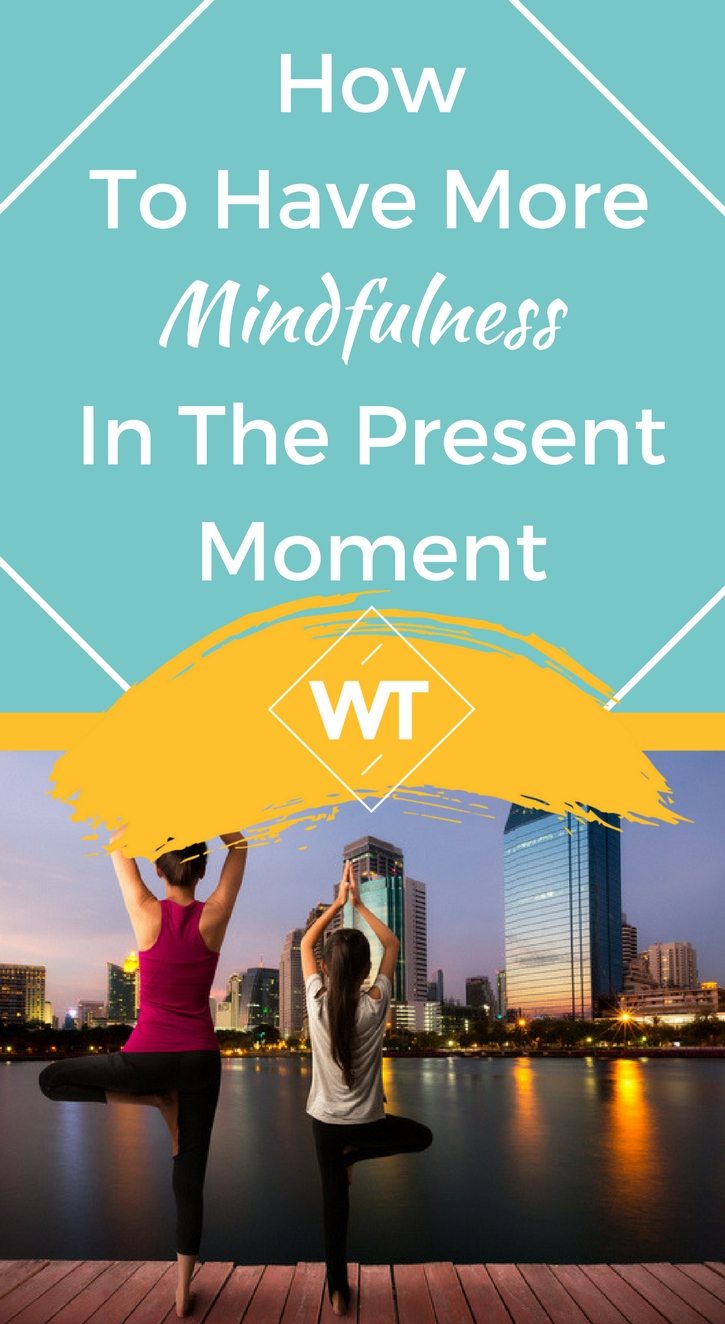How To Have More Mindfulness In The Present Moment

Mindfulness has become one of the most referred to personal development topics, especially among those who seek the perfect balance between health, mental performance, daily life activities and emotional freedom. Mindfulness is closely linked to the art of meditation and is a concept which is deeply interwoven in Zen and eastern spiritual thought.
Yet mindfulness is something that can be applied to our practical day-to-day life with enormous benefits that have been confirmed in numerous medical studies.
Some of these benefits include improved mental performance, emotional balance, drastic reduction in depression and anxiety, prevention of cardio-vascular problems, a general attitude of openness and positivity to life and much more.
To start explaining what mindfulness is, it’s easier to first outline what mindfulness is not. If your mind is foggy or confused, thoughts are scattered and incessant; you lack the ability to concentrate (even physical movements are expressed in clumsiness or lack of coordination); you are fatigued and you are overpowered by emotional surges; you are experiencing the opposite of mindfulness.
Mindfulness is when you are in the flow of things and more in tune with yourself. Your thoughts are less scattered and you generally feel a strong sense of being present in the moment: ‘You are Here Now.’ There is also a strong feeling of being centered and in balance.
Another way of seeing mindfulness is that it is this feeling of balance between mind and heart. Most of our time we are out of balance because our incessant thinking, analyzing, and worrying about this or that hijacks our mind and our entire being.
We feel completely at the mercy of our thinking and we feel stuck in our heads. When the mind is quieter, we find it easier to feel centered, intuitive and at peace with ourselves. Some refer to this feeling as abiding in the heart space. Some see it as a time of peace when the battle between mind and heart dies out.
Triggers to achieve mindfulness
Although mindfulness can be a type of meditation practice (and I also add that it is the natural effect of meditation practice), there are practically innumerable triggers and ways to reach a state of mindfulness. Here,below, I list some of the most practical and easiest ones to follow.
1. The Breath
Something so simple as the breath is a doorway to inner and deeper states of mind. An example of this is how different breathing techniques that deepen, slow or suspend the breath, either calm or excite the nervous system thus changing state of mind and consciousness.
Our breath can be also a doorway to mindfulness. Being conscious of your breathing is a way to anchor your wandering mind and enter a state of mindfulness. In fact, it is a common meditation technique to put awareness on your breathing as this greatly facilitates centering and calming down the mind and body.
Try it out. Even putting your awareness on your breathing for a short two minutes is enough to get you centered and mindful for some time.
2. Thinking
Essentially thinking, or over-thinking, is one of the driving forces that keeps us away from being mindful or focused. Scattered thoughts keep us in a constant state of unawareness and lack of attention.
It is therefore a good practice to be more attentive to your thinking. Instead of being carried away by thinking all the time, try being conscious of your thinking and the content of your thoughts sometimes (such as for example when day dreaming or when negative thoughts or doubts start taking over).
In a way it is like catching yourself in the act and as this starts happening regularly it turns into a mindfulness habit after some time and therefore a mindfulness practice in its own right. What happens effectively is that you start becoming much less of a victim of your own thoughts and the gaps where you are out of your head and into your heart (your natural seat of power and wisdom) start becoming more frequent and longer.
3. Feeling
This is the same thing as with thinking above but in a way it is focused on our emotional states. What we feel dictates to a large extent how we perceive the world and how we interact with it. If our feelings are confused, negative or erratic this can very much influence our state of being and to greater extent, our health.
Feelings and emotions in most people tend to go in either one of two ways: become repressed and drowned in the depth of our psyche or oppositely trigger the person to react (read: over-react!) irrationally and out of his or her own wits. You see, either of these very different ways of dealing with feelings has ultimately the same effect: that it is hidden from our conscious ‘control’ and attention. In short, just like with over-thinking… it takes over our lives.
So naturally it is also very important to practice mindfulness when it comes to feelings and emotions. This can be very hard at first, of course, because we have been unaccustomed to this all our life. Yet, you can start becoming more aware of the milder feelings (at first bursts of intense emotions like anger can be very hard to impartially observe).
As you progress through making a habit out of observing your feelings as they arise, you will then realize that they will start dissolving much faster out of their own accord without leaving aftereffects (yes emotions leave a whole trail of physical, chemical and electrical side effects in our body and bio-energetic fields).
4. Allowing
Throughout our day we constantly meet a variety of obstacles along the way: unexpected changes, delays, challenges, adversities, etc; all of which might trigger resistance in ourselves.
Resistance is a force within us that opposes the way things are flowing around us and in doing so creates more friction and turbulence. More precisely, resistance is the opposite of allowing. When you allow yourself to be taken with (or flow with) a situation but not be taken over by it (confused, overpowered, defeated) you stop interrupting the wonderful magic of life.
When we practice allowing in moments throughout our day, we practice a deep form of mindfulness because we clear deep resistances that block us from being in the present—in the here and now. This brings us to the next point.
5. Releasing
Allowing brings another important aspect to mindfulness: releasing. When you start being more aware and conscious of your inner life such as your feelings, emotions, resistances, and you start allowing things to be as they are without judgment, frustration and anger, you automatically release many of those resistances and inner obstacles that block you from being in the present moment.
Releasing, therefore, is a precursor to mindfulness because we can only be mindful if our mind is free from doubts, worries, confusion, etc, that arise out of such inner resistances and blockages.
6. Focusing
It’s kind of interesting how focusing is both an effect and a tool to being mindful. In other words, if you practice focusing techniques you will naturally promote mindfulness throughout the day and, at the same time, the more mindful you are the more able you are to focus on tasks and situations.
This may sound like a chicken or egg situation but in fact it isn’t. Doing some focusing techniques for a few minutes will help you enter into a more mindful state. When you are more mindful, you do not need to focus (action) because, by itself, being in a state of mindfulness is being focused.
7. Practice (meditation)
Of course if you happen to meditate (regularly or otherwise) or intend to take a meditation class, it is one of the most natural ways to practice mindfulness. In fact there are particular types of meditation that are referred to as mindfulness meditation (note that contrary to what people think, this is not necessarily a different technique but more of a different approach and mindset).
Meditation is always recommended and to be encouraged as a practice because it involves, among other things, the ability to form the habit and mental predisposition to become more aware and detached from our mental stories, emotions and life happenings.
This is also another way of saying that you become more mindful. You are not swayed and dragged by your life situations but you stay calm, present and centered. Instead of being sucked in the drama, the endless worries, anxiety and negative thoughts you remain unaffected like a strong pillar unmoved by the strong waves crashing on the shore.









Leave a Reply